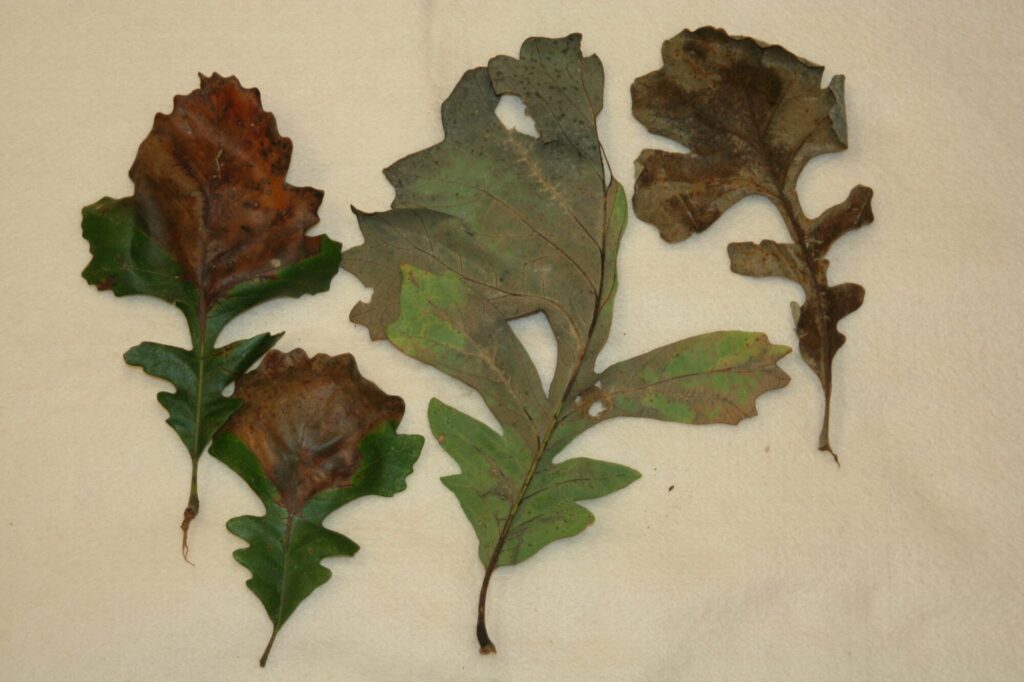Even the mightiest of trees are not immune to threats. One such threat that has gained attention is Bur Oak Blight (B.O.B.). Bur Oak Blight, caused by the fungus Tubakia iowensis, is a disease that affects the bur oak, a prominent species across the Midwest. The disease was first observed in the mid-1990s in Iowa, Minnesota, Wisconsin, and Nebraska but wasn’t discovered in Illinois until 2012. Symptoms of this disease manifest primarily on the leaves, appearing as irregular, brown lesions with a wavy margin. These lesions often appear angular and can range from a few millimeters to several centimeters in size. As the disease progresses, the affected leaves begin decaying, giving them a scorched appearance.
Like any disease, B.O.B. thrives under specific conditions. Prolonged periods of leaf wetness, often due to rain or high humidity, can create an environment encouraging Tubakia iowensis growth and spread. The fungus lies dormant in spots on diseased leaf stalks which remain on the trees through the winter. Fungal spores are released in spring when the new leaves begin to expand, and wet springs can encourage the growth of the fungus. A dormant period follows with few symptoms in between infection and when symptoms begin to appear in June. In July, infected tissues can be seen as leaf veins turn purple and become noticeable. This emphasizes the importance of proper tree spacing, air circulation, and reducing unnecessary irrigation to mitigate disease development.
Managing Bur Oak Blight necessitates a comprehensive approach that combines preventive measures and reactive strategies. Sanitation practices have a lot of value in preventing B.O.B. Removing fallen leaves and debris helps eliminate potential fungal reservoirs, thereby interrupting the disease cycle. In cases of severe infection, the controlled removal of affected leaves may aid in reducing the spread of spores to healthy tissues. Fungicide application is another resource to use against B.O.B. While not a stand-alone solution, targeted fungicide treatment during critical periods of leaf emergence can help suppress the disease. However, this approach must be part of an integrated management plan and should be guided by recommendations from arborists.
Healthy trees are more resilient to diseases and stressors. Ensuring the overall health of bur oaks should be through appropriate cultural practices such as: proper mulching, adequate watering, and regular fertilization. These practices can help maintain tree vitality, making them better equipped to withstand disease pressure. Genetic diversity also plays a role in disease resistance. Planting a variety of tree species, including those with resistance to B.O.B., can help reduce the impact of the disease on your landscape.
Bur Oak Blight serves as a reminder that even the mightiest of trees are susceptible to diseases. By embracing a holistic approach that includes sanitation practices, proper tree care, and disease management strategies, arborists can mitigate the impact of B.O.B. on bur oaks and preserve the beauty and ecological value these trees bring to our environment. Reach out to Homer Tree Care now and ensure your Bur Oak thrives in optimal health!

